Bioware Will Find Any Excuse To Introduce Morrigan To A Game Via A Set Of Stairs.
Bioware will find any excuse to introduce Morrigan to a game via a set of stairs.
More Posts from Worlds-of-thedas and Others
One of the craziest things about Dragon Age (and this might help those of you who don’t go here kind of understand what people are yelling about in the coming months) is its lore. But I don’t mean that in the way you’re probably thinking.
I mean, quite literally, the way it presents its lore to you. In picking up notes and books as you go along and sifting through the codex, the game effectively asks you to act as an anthropologist. You’re met with a host of primary and secondary sources, some many hundreds of years apart from one another, written by anyone from the highest Chantry scholar to John Farmer, and you’re meant to constantly be questioning every piece of information you’re given. What biases are present in what I’m reading? What is fact and what is complete fabrication and what is, potentially, a slightly twisted version of a fact? How does one source potentially contradict another? The lore is one giant mystery-puzzle that you get to piece together across three games, and what conclusions you draw are going to be entirely different from someone else’s, and so on.
And yet, the series still does something even cooler than any of that. You realize, at a certain point, that this idea you have been engaging with on a meta-level — this idea that history is biased and fallible, that it’s written by colonizers and conquerers, genocidal racists and religious zealots, that the ability to control historical narrative is the prize you win for spilling the most blood — that idea is one of, if not perhaps THE most important, overarching theme of the series. The way that we remember history — what we remember and what we don’t, and why — and the impact that has on people on a sociological, political, cultural and psychological level, on both a macro and micro scale. It’s the entire thesis of the series’ main villain’s whole motivation.
And there’s gonna be a lot of people that don’t care about all that but me personally it makes me want to gnaw on a cinder block and scratch at my walls
Known Types of Magic
Magic is so vast that mages often put special emphasis or interest in a particular brand of magic. Sometimes this is because they have a natural affinity for it, or sometimes it’s just a matter of what their education is like.
Magic has its limits, but not many. Even still, those limits are pushed and broken—for example, World of Thedas vol. 1 stated that true teleportation is impossible, but in the Tevinter Nights story The Wigmaker Job, an elven mage does just that, transporting a room from one location to another. What we know of magic lore is constantly evolving, and when we talk about the fields of magic, or specialties if you prefer, there are only so many concrete facts and constraints.
In other words, it’s much easier to imagine whatever the hell you want. When looking at the principles of magic schools, I argue that the imagination should not be limited to in-game battle mechanics. For that reason, this post is not about just listing off all the specific abilities each school of magic can do, but rather, the concepts behind each school. The general principles. The ideas!
Keep reading
fun little details around minrathous
so, because I love little worldbuilding details, I decided to scour minrathous and ended up finding lots of unique assets! some of my favorites below:
1. the viper watching rook from the rooftops

I already dedicated a one-off post to this, but the first time you travel to minrathous after the prologue, you can catch a glimpse of the viper on the rooftops.
2. the viper's wanted poster

speaking of the viper, he decides to meet up with you literally right across from a wanted poster of himself. so far, this is the only copy I've found, so it may be an entirely unique asset intentionally placed there. thanks to caitie ghiil dirthalen's post on the tevene alphabet, I was able to translate the heading as 'reward.' the second line? lorem ipsum lmao.
3. murder by candlehop

you can find this venatori surrounded numerous candlehops in a small locked alcove; I believe there are at least 10 candlehops in the vicinity?
4. serpents, serpents everywhere



unsurprisingly, snakes turn up a lot in the architectural details; you can find them in braziers, gutters, pipes, pillars, etc.
5. the cobbled swan sign

I was absolutely delighted to find out that the cobbled swan - the tavern you visit for several major story beats - has a unique sign. it's so cute :') (and contains another snake).
6. tevinter cuisine



the cobbled swan also offers an interesting look at some culinary staples of minrathous. the calamari and oysters were expected since it's a coastal city, but the scorpion pasta was a surprise...
I’m replaying the Jaws of Hakkon dlc and it really has me mulling over the sheer loneliness of our Inquisitor’s situation.
The Hero of Ferelden gained their title and status after they had already bonded with their companions and stopped the blight. Hawke is known for their dysfunctional polycule/found family. Rook is in the same boat.
But the Inquisitor became a symbol before they even had a chance to really get to know anyone. Every other protagonist leads a group of companions, meanwhile the Inquisitor leads a political and military force. Sure, they still become close with some of their companions and advisors, but everyone constantly reminds them of their status as a holy symbol and how intimidating and unapproachable it makes them.
You can literally tell Varric, Mr. Friends-With-Everyone, “I don’t need a disciple, I need a friend” and he’ll reply “If you knew how intimidating you are, you wouldn’t make it sound so simple”. Imagine how isolating it must be to keep hearing that.

they stopped a whole ass blight. give them the griffon.
Ferelden and the Sea
Ferelden had never been a seafaring culture... (The Stolen Throne, p. 209)
Arl Rendorn's objections in private had been strenuous. He did not trust the sea, like any good Fereldan... (The Stolen Throne, p. 216)
The Fereldan distaste for the sea comes up multiple times in The Stolen Throne and I don't think any later canon has really contradicted this. Unlike other coastal nations like Antiva and Rivain, Ferelden lacks any substantial naval forces or seafaring culture.
This is really odd for a nation bounded by the sea over more than half its borders, a nation with a whole handful of major ports. And based on that line about Arl Rendorn, it doesn't seem to be merely a worldbuilding oversight but an active cultural distrust for the sea.
Why would that be the case?
It's always worth remembering that in Dragon Age, humans are not native to Thedas and therefore did not evolve on this continent the way humans and human cultures have evolved in the real world. To the best of our present knowledge, humans have only lived in Thedas for about 4000 years, give or take. They came from somewhere else, and they presumably brought cultures with them. The first humans in Thedas were known as the Neromenians, arriving from the north and gradually spreading across the continent. The human tribes that would become known as the Alamarri are believed to have settled in Ferelden sometime around -2415 Ancient. Legend has it that they came south fleeing their previous home, where they had been troubled by some sort of spirit they called a "shadow goddess."
The Alamarri maintained tribal social structures longer than most humans in Thedas, only uniting to form the nation of Ferelden about 400 years before the present day.
I wonder what beliefs and cultural norms the Alamarri might have carried from the time of the Neromenians that might have caused them to distrust the sea.
We don't know much about where humans came from before they arrived in Thedas, but it seems logical that they came from across the sea. In more recent years, we've seen the presence of a mysterious people calling themselves "the Executors," or "those across the sea." Are they connected to the origins of humanity in any way? Who knows? At this point, we don't have enough information about them to say. The most we know is that they have taken an interest in the recent events in Thedas, and that Solas claims they are dangerous.
But what if the early humans of Thedas remembered some great danger across the sea--something, say, that caused them to flee their original home? And what if the Alamarri held onto those cultural memories longer than most, with their distrust for the sea embedding itself in Fereldan culture to this day, for reasons no one remembers anymore?
These days I kind of can't stop thinking about how much I enjoyed the possibility of being from Orzammar in Origins, specifically because just being who you are put so much of the early game in a wholly different context.
Like, a dwarf from Orzammar has, by definition, lived literally under a rock their whole lives!! They've never left the underground, and yes, while that also makes their ignorance of surface squabbles (the mage issue, the Ferelden/Orlais conflict, everything with the city elves and the Dalish, etc.) make a lot of sense, it also comes with so many interesting new angles that I'm honestly so surprised still that I've never really seen it mentioned very often, if at all. (Even though we even get an explicit moment to reflect on it, when leaving with Oghren.)
In Origins, the moment a dwarf first steps out through the gates of Orzammar and begins the game, is a profoundly life-altering experience. Dare I say, even more so than it is for an elf or a human. Because stepping out, for the first time, they are entering an entirely new world, and for the first time, in front of them is a vast expanse of nothing but air.
The end of the prologue, it's not just a fundamental personal change that awaits you, it's also a displacement so complete, that it's absolutely dizzying to even think about.
That first time a dwarf feels the sun on their skin, they are made sun-touched, a surfacer: stripped not only from caste and kin, of identity, but also faith and memory, any favor their ancestors may have still held for them, and any possibility of ever returning, as far as they know. (Aeducan may even have a bitter little chuckle over the irony of how they could very well have just one day before shrugged off the concerns of their surface brethren completely, only to be made one of them now.)
Their whole lives, they had always been able to see the opposite wall of the cave, or at least to know for sure that it's there, along with the miles and miles of unchanging, crystal-littered rock stretching protectively over their heads-- now all of that is gone. There's nothing between them, and the infinite and ever-changing blue, grey, orange, black of the open sky they've never seen, and in the distance, there's no wall-- just glorious, humongous mounds and spires of rock jutting up into the belly of the sky, the likes of which they've only ever seen from the inside.
Orzammar, despite no sunlight ever penetrating that far, is always lit bright, and it's heated by the lava streams and pools below. A dwarf has never known anything colder or warmer, brighter or darker, never seen seasons change... the biting winds and the frequent rains in Ferelden are completely new to them, not to mention the terrifying cracks of thunder that sound like the very Stone over them cracking in two, the bright flashes of lightning illuminating the night for but a moment, or waking in the middle of the night to what sounds like countless fingers pat-pat-patting the tarp of their tent, or the fact that animals -which are varied and plentiful and wholly alien- sometimes just randomly fall into the sky, like the rumors say! They might know academically that with birds, that just sort of tends to happen, but they've never seen one take off!!
Hell, all of surface flora and fauna are completely new to them-- it's likely they've only ever seen a tree or a dog in a picture book. Flowers, they've likely only ever seen as an expensive and frivolous luxury few can afford to have for a while, and even then, they are by necessity brought in removed from their roots, dead, wilting, taken from their natural place... while here, blooms just spring up underfoot willy-nilly, not entirely unlike mushrooms at the home which is not theirs anymore.
And... there must be something organic, something comfortingly animal to the scent of hundreds of warm bodies crammed into a sealed hole in the ground-- which is just gone now. The air is fresh, clean... empty, cold, lonely. No smell of spilled ale, piss, and vomit, no thick scent of the combined breaths and bodies of all their people... no scent of belonging, the air that moves their lungs now is no longer that which has moved those of all they've ever known, and every breath washes more, and more, and more of who they once were from inside their very body.
Being on the surface, it's like being thrust into an alien world, with which all just expects you to be intimately familiar. What do you mean the grass, the bugs, the birds, the leaves are strange? What do you mean you've never eaten leaves from this plant, fruit from this tree, the flesh of this creature you've only ever heard about? They laugh when you avert your eyes from the sky and try not to think about falling into it, or when you startle at the feeling of falling water suddenly hitting your skin, as if that was somehow funny, charming.
The night, which you've never before seen fall, is a comfort from all that endless, boundless seeing- but after the Joining, not even that is a relief.
Because if you're a dwarven Warden, all the dreams you've had in your life have been nightmares.
So you cope. You learn, and adapt, and endure.
Strong and immutable, like the Stone from which you were rent.

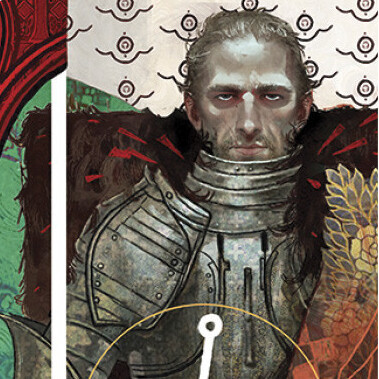

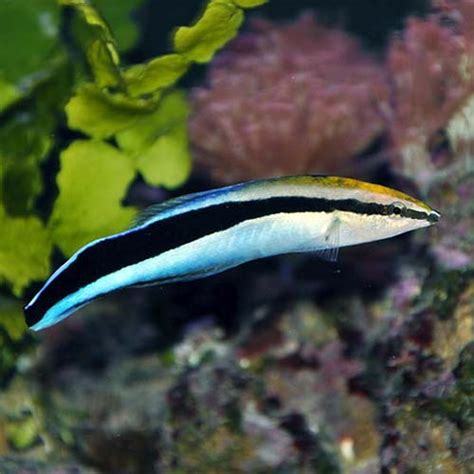
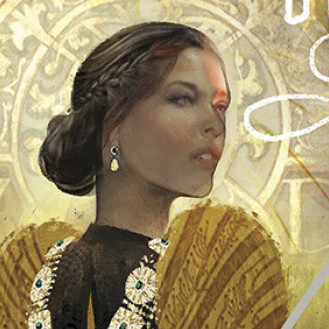

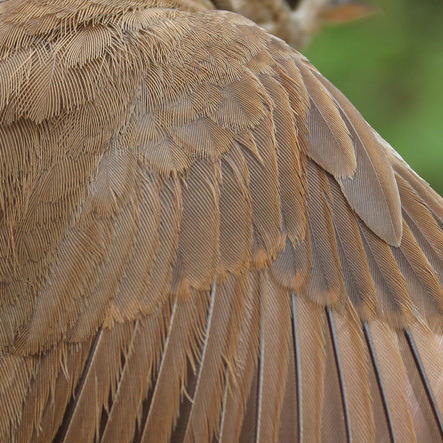
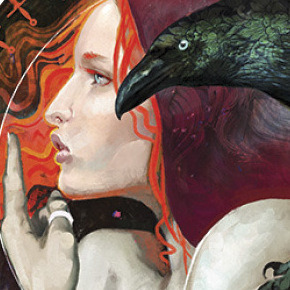

Daemon Age: Inquisition
Advisors
Cullen Rutherford & Aeltjedemuis - (Mabari/Pittweiler) Cullen, ever the Fereldan, settled quite patriotically (and young) as a robust and strong dog. Aeltje is often seen next to the stern-faced Commander, wagging her tail ferociously. Pitties can be either aggressive or gentle depending on who trains and nurtures them. Their bond is tender ever since weaning off Lyrium. It is unbearable for her to leave his side.
Josephine Montilyet & Agapito - Bluestreak cleaner wrasse (Labroides dimidiatus) Agapito sits within a fishbowl on the ambassador’s desk, or floats within a water-filled bauble hanging around the Antivan’s neck. He can put on quite an attractive show, dancing about, and revels in practical and mutual cooperation.Yet beyond the flashing scales lies a cunning mind. Like Josephine, the cleaner wrasse always finds the benefit in a transaction.
Leliana & Sharon - Common nightingale (Luscinia megarhynchos) Why do you think they call the spymaster Lady Nightingale? Actually, the nickname is purely incidental. While malcontents are focused on the frightening Right Hand, Sharon works away chipping foes down bit by bit, singing beautifully all the while. She can be seen under her human’s hood, or sometimes at an unnervingly far distance.
Rhythm and Breath in Dragon Age: Inquisition
Inquisition plays around with a couple recurring rhythms:
iambic pentameter (dagger skill tree, Maryden)
trochaic tetrameter (Saga of Tyrdda Bright-Axe)
the cadence from the song Hallelujah (Solas)
Many folks have already written technical comparisons of these different rhythms, but I specifically wanted to talk about how they handle breath.
Without even paying attention to the word content of these rhythms, the breath patterns help set the mood. Are my breaths regularly spaced? Am I gulping for air? Am I breathing slowly and calmly?
As we go through the different rhythms, try reading them aloud to see where your breath lands.
Iambic Pentameter
Iambic pentameter is a five (penta-) foot meter, where each foot is an iamb. An iamb is a two-syllable “da-DUM” sound, an unstressed syllable followed by a stressed syllable. So each line has 10 syllables total.
Here’s an example from the dagger skill tree, with the feet color-coded:
You leap through shadows to attack your foe
With deadly strikes that hit them from behind.
Before your target turns to face your blow,
You move to stealth, impossible to find.
If we read this aloud, we find that 10 syllables is a lot! There are very few mid-line commas, so we naturally want to breathe between lines. But each of those breaths needs to last for ten syllables. If we don’t want to pass out, we’re reading the lines a bit faster than we normally would.
The iambs add even more forward momentum. Since we need to save more breath for the second syllable in each pair, we hurry slightly faster over the unstressed syllables.
Because we keep repeating that same syllable count and stress pattern, the overall effect is one of speed and precision. This is a rogue rapidly making blow after blow after blow with their daggers, hitting every single time. This is Maryden rattling off each sentence with perfect poise and musical training. There’s no time here for thinking; no room for mistakes. The next line is going to be ten syllables too. And the next. And the next.
Trochaic Tetrameter
By contrast, the Saga of Tyrdda Bright-Axe only has 4 (tetra-) trochees (DUM-da) per line. On every other line, the final unstressed syllable is dropped (catalexis).
That’s a lot of jargon, let’s color code the feet:
Tell the tale of Tyrdda Bright-Axe
mountain maker, spirit’s bride:
Free, her people, forged in fastness
made in mountains, hardy hide.
This is a classic meter, often found in nursery rhymes and folk songs. Because there’s only 8 syllables per line (plus lots of mid-line commas), we can read each line at a casual pace, without speeding up. The catalexis adds extra emphasis to the rhyming lines, since we get to the last (7th) syllable with more breath to spend. And even within each foot, we don’t have to manage our breath as much, because the stressed syllable comes first.
This creates a comfortable rhythm that lends itself to memorization and recitation. We can easily imagine this saga being passed down beside a campfire.
Hallelujah
Since the Hallelujah cadence comes from music rather than poetry, it has an additional kind of stress, the mid-measure secondary stress.*
We don’t exactly have feet, but we can color code each measure:
I lay in dark and dreaming sleep
while countless wars and ages passed.
I woke still weak a year before I joined you.
For the first two lines, each measure is 4 syllables long, so we get 8 syllables in each line, similar to the Tyrdda poem. If we read it aloud, it’s easy to do it slowly and thoughtfully. The secondary, quieter stresses also create an echoing effect, which emphasizes that Solas is thinking about the past.
Then the last line goes absolutely bananas. It abandons the unstressed-stressed repetition and gets much longer, flying up to 11 syllables — even longer than the 10-syllable lines in iambic pentameter.
Additionally, Solas tends to glue the first two lines together, which is SIXTEEN syllables, so they sound closer to an octameter** than the tetrameter(ish) sound of the original song.
The overall effect is of someone trying to be measured and thoughtful, but partway through he gets hit with nostalgia and the lines spill out in a long breathless rush. Bro has to speak quietly so he doesn’t totally run out of air.
*Music theory sidebar: Leonard Cohen’s original version is in 12/8 time, so the secondary stress isn’t as prominent. It shows up in one or two verses, but not all. A lot of the subsequent covers, including k.d. lang’s, sound more like 6/8. That means every measure has a 2-beat count: 1-2-3 4-5-6. I think the 6/8 version fits Solas’ speech pattern a bit more. But he’s not singing, and secondary stresses are harder to place. Syllables don’t have to align 1:1 with melody notes (in fact, in Hallelujah there are several places where the syllable alignment changes from verse to verse). So someone else could easily hear a slightly different stress pattern.
**This implies a cursed version of Solas where the last line is omitted and he’s actually syncing his speech to Modern Major-General.
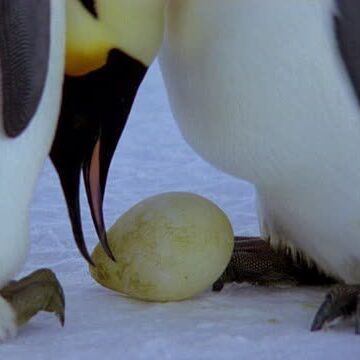
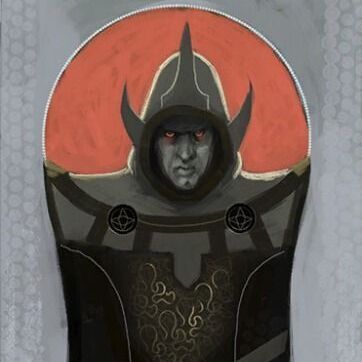



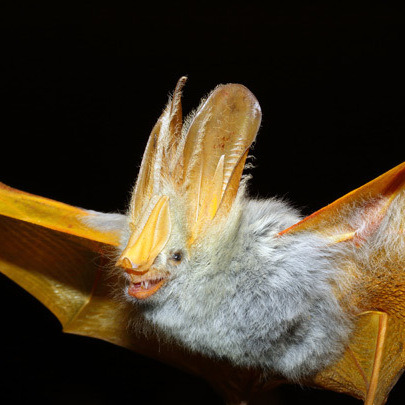



Daemon Age: Inquisition
Dorian’s Loved Ones
Gereon Alexius & Pteriidum - Emperor penguin (Aptenodytes forsteri) Like Alexius, emperor penguins go to extreme lengths for their children, of which each season they only have one. If they lose their child, they will even steal one from another penguin. Penguins care deeply for others (see Alexius wanting to fight corruption in Tevinter), but the love for their child trumps all. After the magister’s run with the Venatori, Pteriidum manifests Gereon’s deteriorating mental health as catastrophic molt.
Felix & Melzar - Yellow-winged bat (Lavia frons) Bats are symbols of vigilance, and Felix will dutifully watch his father in order to help him and others. Bats are also known as holders of disease, similar to how Felix suffers from the Blight. Yellow-winged bats are social animals and will search for their fellows if they are lost. They are also especially vigilant; during the day, one of a mated pair will stay awake to guard their territory. And they’re yellow.
Halward Pavus & Aplites - Largemouth bass (Micropterus salmoides) A bass is no trogon or felid, but it is a carnivore, and its mouth is full of teeth. It will eat anything in its path, and will not change course in its ascension. While not feared, it is formidable. Aplites is kept wet by enchanted jewelry and “swims” through the air in a bubble of water following her other half. Halward and Aplites had great things planned for their son, but if it takes too long for the fry to leave, the parent bass will not hesitate to eat them.
-
 softjustice liked this · 2 weeks ago
softjustice liked this · 2 weeks ago -
 ggomo liked this · 3 weeks ago
ggomo liked this · 3 weeks ago -
 becauseforoncethisisme liked this · 1 month ago
becauseforoncethisisme liked this · 1 month ago -
 trilumtar reblogged this · 1 month ago
trilumtar reblogged this · 1 month ago -
 anabsurdistcryptid liked this · 2 months ago
anabsurdistcryptid liked this · 2 months ago -
 radbanditgooplight liked this · 2 months ago
radbanditgooplight liked this · 2 months ago -
 delicate-flower-here reblogged this · 2 months ago
delicate-flower-here reblogged this · 2 months ago -
 13leagues liked this · 2 months ago
13leagues liked this · 2 months ago -
 spooky-assassin liked this · 2 months ago
spooky-assassin liked this · 2 months ago -
 pseudospaceship liked this · 2 months ago
pseudospaceship liked this · 2 months ago -
 socialjusticerogue reblogged this · 2 months ago
socialjusticerogue reblogged this · 2 months ago -
 hauntedgarden95 reblogged this · 2 months ago
hauntedgarden95 reblogged this · 2 months ago -
 vallaslins reblogged this · 2 months ago
vallaslins reblogged this · 2 months ago -
 hcmoeroticisms reblogged this · 3 months ago
hcmoeroticisms reblogged this · 3 months ago -
 maxwelltrev liked this · 3 months ago
maxwelltrev liked this · 3 months ago -
 findher-ogg liked this · 3 months ago
findher-ogg liked this · 3 months ago -
 princessjerboa liked this · 4 months ago
princessjerboa liked this · 4 months ago -
 mouth-of-andraste liked this · 4 months ago
mouth-of-andraste liked this · 4 months ago -
 creativemercinary liked this · 4 months ago
creativemercinary liked this · 4 months ago -
 badwolf109 liked this · 4 months ago
badwolf109 liked this · 4 months ago -
 angelsndragons reblogged this · 4 months ago
angelsndragons reblogged this · 4 months ago -
 angelsndragons liked this · 4 months ago
angelsndragons liked this · 4 months ago -
 cursedskull-666 reblogged this · 4 months ago
cursedskull-666 reblogged this · 4 months ago -
 cursedskull-666 liked this · 4 months ago
cursedskull-666 liked this · 4 months ago -
 rooks-dagger liked this · 4 months ago
rooks-dagger liked this · 4 months ago -
 introvertedfangrl liked this · 4 months ago
introvertedfangrl liked this · 4 months ago -
 bananahehe liked this · 4 months ago
bananahehe liked this · 4 months ago -
 sparklingarsonic liked this · 4 months ago
sparklingarsonic liked this · 4 months ago -
 vermilionheart liked this · 4 months ago
vermilionheart liked this · 4 months ago -
 nevarrantorte reblogged this · 4 months ago
nevarrantorte reblogged this · 4 months ago -
 nevarrantorte liked this · 4 months ago
nevarrantorte liked this · 4 months ago -
 erme-maererme liked this · 4 months ago
erme-maererme liked this · 4 months ago -
 wardencommander-surana reblogged this · 4 months ago
wardencommander-surana reblogged this · 4 months ago -
 wardencommander-surana liked this · 4 months ago
wardencommander-surana liked this · 4 months ago -
 yesimweird reblogged this · 4 months ago
yesimweird reblogged this · 4 months ago -
 yesimweird liked this · 4 months ago
yesimweird liked this · 4 months ago -
 drawinganchors liked this · 4 months ago
drawinganchors liked this · 4 months ago -
 lumosnite liked this · 5 months ago
lumosnite liked this · 5 months ago -
 wingsaloft reblogged this · 5 months ago
wingsaloft reblogged this · 5 months ago -
 wingsaloft liked this · 5 months ago
wingsaloft liked this · 5 months ago -
 vosquitransitis reblogged this · 5 months ago
vosquitransitis reblogged this · 5 months ago -
 vosquitransitis liked this · 5 months ago
vosquitransitis liked this · 5 months ago -
 danzafila reblogged this · 5 months ago
danzafila reblogged this · 5 months ago -
 lynndenberg liked this · 5 months ago
lynndenberg liked this · 5 months ago -
 simply-maki liked this · 5 months ago
simply-maki liked this · 5 months ago -
 flowersforthemachines liked this · 5 months ago
flowersforthemachines liked this · 5 months ago -
 octobrokpus liked this · 5 months ago
octobrokpus liked this · 5 months ago -
 danzafila liked this · 6 months ago
danzafila liked this · 6 months ago -
 tupari liked this · 6 months ago
tupari liked this · 6 months ago

A collection of canonical and non-canonical lore of Thedas, and archive of the amazing meta this fandom has produced. All work will be properly sourced and any use of other's work should conform to their requests. (icon made by @dalishious)
72 posts